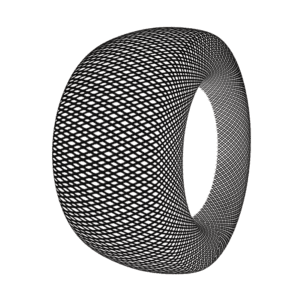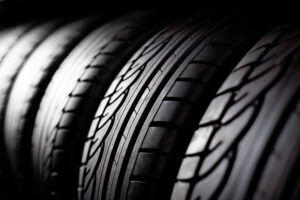Ultimate Golf Cart Tire Buyer’s Guide
Ultimate Golf Cart Tire Buyer’s Guide
Choosing the right golf cart tires can have a significant impact on the safety and performance of your golf cart. There are several factors to consider when selecting golf cart tires. This blog post will provide an in-depth breakdown of some of these considerations to simplify your search.
Terrain
The type of terrain you will be driving on will also determine the type of tire you need. For example, if you will be driving on rough terrain, you may need a tire with a more aggressive tread pattern to provide better traction, whereas you may need something with a street tread if you are primarily using the cart on the road.
Brand and Quality
There are many brands of golf cart tires on the market, and the quality can vary greatly. Choose a reputable brand with a proven track record of producing high-quality products.
Tire Size
The size of your golf cart tire is important, as it affects the stability, handling, and overall performance of your golf cart. Make sure you choose a tire that is the correct size for your golf cart. You’ll want to be sure that you select a tire that is an appropriate diameter and width for your specific vehicle so that you can avoid any rubbing or figment issues.
Max Load Capacity
It is important to select tires that are able to support the weight of your golf cart and any passengers, cargo, or equipment that may be on board. Simply put, the max load capacity is the amount of weight your tire can support safely. This number is available from the tire manufacturer. ACE of Carts lists the max Load Capacity for every tire that we carry on our e-commerce store, so please use that as a resource. You’ll want to multiply that number by 4 tires in order to get the maximum load-carrying capacity of your golf cart. If you find that the maximum load capacity of your cart isn’t sufficient for your application, you may want to upgrade your tires before you have an issue. It’s important to note that tire manufacturers derive these load ratings with a specific tire pressure in mind, so be sure to run your tires with the correct tire pressure.
Tire Ply
Understanding tire ply is important for anyone who wants to make informed decisions about purchasing tires. The term “ply” is used in the tire industry to refer to the number of layers of rubber-coated fabric used in the construction of a tire. Tire ply is used as an indicator of its strength and durability. Tires with more plies are typically stronger and more durable than tires with fewer plies. In addition to strength and load capacity, tire ply also affects the tire’s handling and ride quality. Tires with more plies tend to provide a smoother, more stable ride, but may also be more prone to road noise and vibration. Conversely, tires with fewer plies tend to be stiffer, which can result in a rougher ride, but may also provide better handling and grip. Most golf cart tires are 4-ply, but there are 6 and 8-ply options available for more heavy-duty applications.
Tire Construction
Radial Tires

Radial tires are tires that have cords running at 90 degrees relative to the direction of travel.
Pros
- Known for their long tread life and improved handling.
- Superior heat dissipation and flexibility, which extend the life of the tires.
- Better ground contact, traction, and stability - especially at high speeds.
- Lower rolling resistance, which means they require less energy to keep the vehicle moving when compared to bias ply tires.
Cons
- Radial tires are typically more expensive.
- Can be damaged easily when used on off-road applications.
Bias Ply Tires

Bias ply tires are tires that have cords running at a 45-degree angle relative to the direction of travel. Traditionally, most golf cart tires are bias ply.
Pros
- Typically more affordable compared to radial tires.
- Crosshatch construction provides stronger/tougher sidewalls, making them a good option for off-road and heavy-duty applications.
- Typically have a higher load capacity than radial tires.
Cons
- They have a shorter tread life compared to radial tires.
- They do not perform well at high speeds.
- The cords are more prone to separating from the tire, which can cause the tread to wear down more quickly.
- Higher rolling resistance compared to radial tires, which means they require more energy to keep the vehicle moving.
Here are a few other considerations:
- If you use two different sizes of tires, be sure they are not on the same axle.
- Be sure to check your tire pressure regularly, and rotate your tires periodically. For more information on tire maintenance for your golf cart, click here
- You may want to invest in a Tire Pressure Monitoring System (TPMS). This will assist in maintaining proper air pressure in your golf cart tires, which will help to prolong their life. Click here to view our TPMS.
In conclusion, when choosing golf cart tires, it is important to consider the type of golf cart, the terrain you will be driving on, the tire size, load capacity, construction, and brand and quality. By considering these factors, you can select the right tires for your golf cart and ensure a safe, enjoyable, and efficient driving experience.

